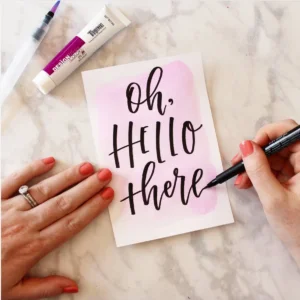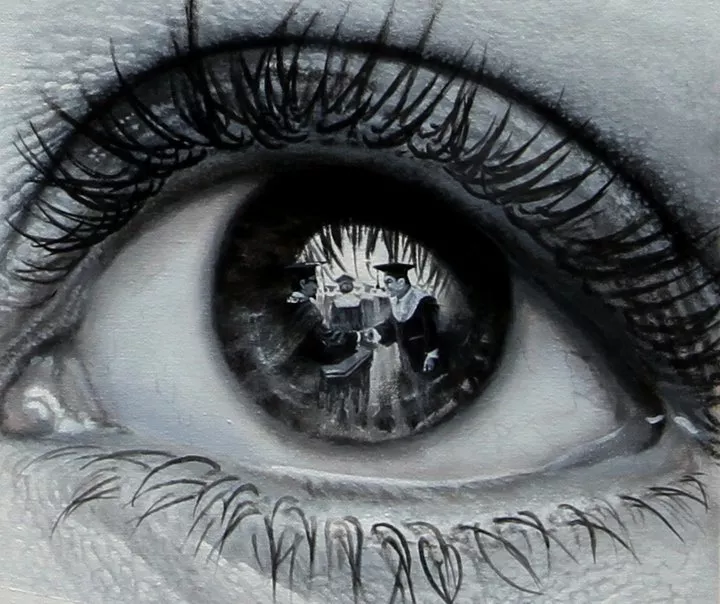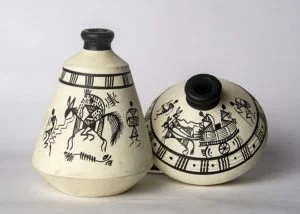Over the course of a millennia the enhancement and development of the world of Arabic calligraphy happened. It has written the word of God, helped preserve human knowledge and understanding. However, over the years its popularity has faded among the masses in India and artists are on a mission to revive it. It has been codified, stylized, and lent itself to abstraction. It has even struggled with the modern world and found renewed life in both art and typography. We at Podium School believe in the learning of this beautiful Art and therefore have online classes to teach the same.
Nowhere is calligraphy more revered than in Islam. According to Islamic tradition, God “taught with the pen, taught man that which he knew not” (Qur’an 96:4). In the early centuries of Islam, Arabic not only was the official language of administration. But was also and has been the language of religion and learning. In many parts of the world, the practice and importance of calligraphy has waned. But in Arabic culture, the more than 2,000-year-old tradition remains as vibrant and revered as ever.
The Origins
In the earlier times Arabic tribes preferred to memorize text and poetry and orally pass it on from generation to generation. However, that changed with the spread of Islam and the growing importance of preserving the Quran in written form. Below, we outline the history of Arabic script and calligraphy.
The Spread of Islam
Before the spread of Islam, the Arabian Peninsula was home to a variety of early Semitic languages. And the discovery of calligraphic artifacts in these early languages prove that the practice of calligraphy predates Islam. Ancient Persia, for instance, was using cuneiform calligraphy to adorn the monuments of kings as early as 600–500 B.C.1. Nevertheless, it was undoubtedly the spread of Islam that ushered in a great age of calligraphy throughout the ancient Middle East.
The Golden Age
In the world of Arabic calligraphy three calligraphers mapped along its great succession, and they are;
- Visier Ibn Muqla (886–940)
- Ibn al-Bawwab (believed to have lived from 961–1022)
- Yakut al-Musta’simi of Amasya (d. 1298)
Visier Ibn Muqla
Visier Ibn Muqla is famous for codifying the principles of calligraphy, including his theory of proportion, which calligraphers use to this day. His theory of proportion established the rhomboid dot and the length of the alif stroke as the units of measurement. In a particular script, all the letters are using this.
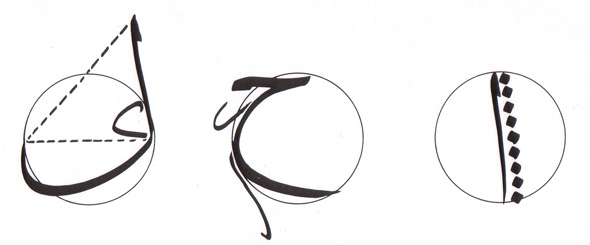
Ibn al-Bawwab
After Ibn Muqla, came Ibn al-Bawwab. Ibn al-Bawwab refined several of Ibn Muqla’s scripts. He invented the cursive scripts of Rayhani and Muhaqqaq. It is however very sad that none of his manuscripts have survived to the present.

Yaqut al Musta’simi
The third famed calligrapher of the Golden Age, Yaqut al Musta’simi, was a scribe in the royal court who further systematized the method of proportional measurements and began the practice of cutting the pen nib at a slant, a seemingly minor change that forever changed the aesthetic and methodology of Arabic calligraphy.
The Evolution
Arabic calligraphy also evolved over time into two distinct families: Kufic and rounded scripts.
Kufic
Kufa is the city that gave its name to Kufic, the earliest example of a universal calligraphic style. In the early days, the use of Arabic script was very less. This was because of the culture’s strong oral tradition. However, the language became much more important, during the preserving of the Quran due to the spread of Islam. As a result, the beautification of the script happened. Today, Kufic consists of a number of styles. However, it has angular, rectilinear letterforms and a horizontal orientation.
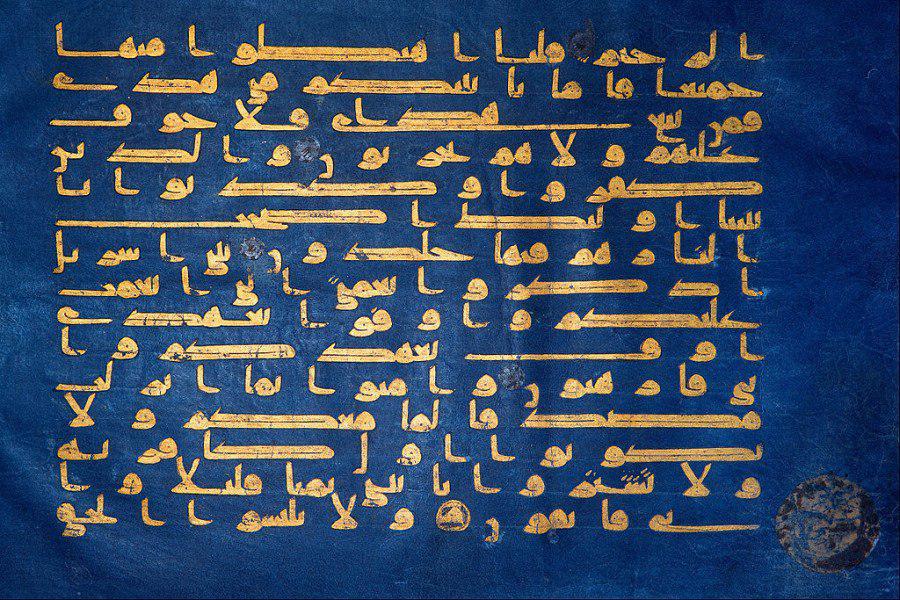
Rounded Scripts
While Kufic became standard for sacred texts, there developed a need for a script that was quicker to write and better suited for documents of a smaller scale, like letters. Ideally, rounded script should not look like a human hand has written it, so there’s little to no room for creative expression when writing in this style.

The Kit
The tools used for Arabic calligraphy differ from the tools used for traditional or modern calligraphy. Traditional calligraphy toold are a nib, nib holder, and ink. But reeds and rigid wood is used for making Arabic calligraphy. To enter the world of Arabic calligraphy these tools are a must. Below are some of the most common implements and supplies used in Arabic calligraphy:
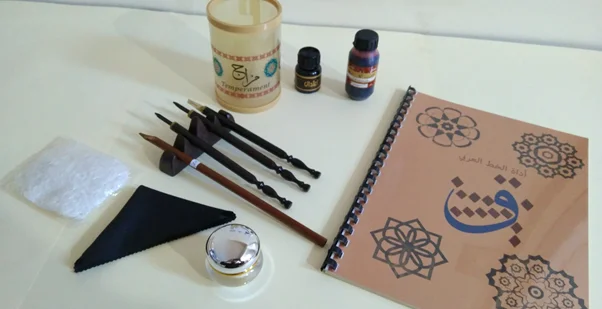
Qalam Pen
In Arabic calligraphy the most commonly used pen is the Qalam pen. A cut and dried reed is what used to make this pen. This pen is considered a symbol of wisdom, in Islam.
/1.jpg)
Kamish Pen
A Kamish pen is also known as a reed pen. Arab, Turkish, and Iranian calligraphers use this pen typically. It is made from reeds that grow along rivers, however, it requires a lengthy curing process before it can be used for calligraphy.
Bamboo Pen
The bamboo pen is one of the oldest calligraphy tools in the world. Bamboo is the ideal material for Arabic calligraphy because its rigid edge allows calligraphers to achieve the full spectrum of pen movements, but it also offers a level of flexibility.Java Pen
Java pens are made from Javanese thorngrass. They are known for their rigidity and the ability to produce a sharp edge for letterforms, therefore they are well suited for smaller scripts.
Handam Pen
One of the most versatile pens for Arabic calligraphy, the Handam pen is available in a range of different sizes, from a large 10mm variety to a sub-1mm micro nib. This makes it suitable for a range of different types of scripts. In addition, it offers a high level of durability: you don’t have to cut or sharpen it nearly as frequently as you would a Kamish pen.
Celi Pen
For large-scale Arabic calligraphy, we use the Celi pen. The nibs for celi pens are made from bamboo. and they include built-in reservoirs for ink.

Ahar Paper
For Arabic calligraphy many different types of paper is suitable. But there is a type of paper made specifically for the art form. Ahar paper is handmade in central India. It is coated with a combination of starch, and the sizing is made from alum and egg whites. This glossy coating prevents the ink from penetrating the paper; instead, the ink sits on top of the coating, which allows calligraphers to erase and make corrections.
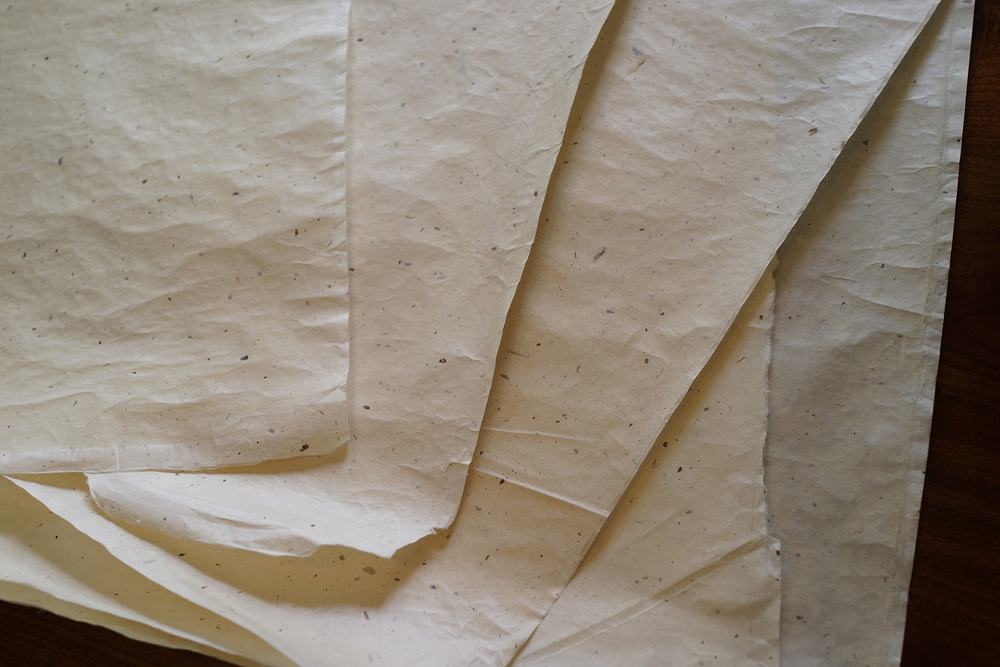
Ink
Arabic calligraphy ink used to be soot-based and water-soluble traditionally. Therefore, you can remove any mistakes with a wet cloth. While black is the most traditional color for the ink, a variety of ink colors are now available and widely used.
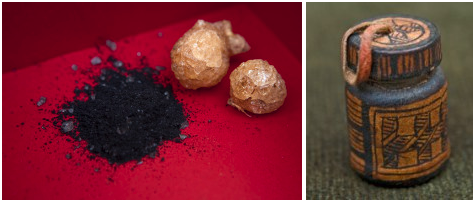
Modern Arabic Calligraphy
Arabic calligraphy may serve as an inspiration for modern art. However, it is still heavily grounded in tradition. In fact, many contemporary artists have developed their own style and techniques for Arabic calligraphy. Modern artists may put their own spin on traditional letterforms and mediums, incorporating calligraphy into jewelry and digital designs, or using paint on canvas, rather than ink on paper.
Share with your friends
